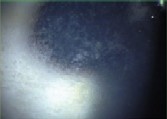Q. Ive recently seen two patients with diffuse lamellar keratitis (DLK) following LASIK enhancement. What is the mechanism behind this condition?

A. The mechanism that causes DLKalso known as the sands of the Saharais unknown, although many theories have been offered. One of the original theories posits that oils in the microkeratome cause DLK, says Paul Karpecki, O.D., of Olathe, Kan. Other suggested causes: temperature and bacterial exotoxins in the autoclave or air-conditioning systems. Some surgeons claim to have no DLK after switching to powderless gloves.
DLK is really just the corneas inflammatory response to a stimulus in the interface, says Philadel-phia ophthalmologist Christopher Rapuano.
There are two major types of DLK: epidemic and sporadic. The former refers to multiple cases from a single surgical center within a short period. In these cases, a contributing factor, such as bacterial particulates, may be present in the surgical environment.
This can also cause sporadic DLK. However, some people are more prone to an aggressive healing response. There is always trauma during surgery, Dr. Karpecki says. The white blood cells of the patient react and sometimes overreact, resulting in white blood cells in the interface and DLK.

DLK in an eye after LASIK enhancement.
Recent studies have shown that patients with a pre-existing epithelial defect are at greater risk for developing DLK after surgery. In a study of 36 patients with DLK, researchers concluded a patients chances for developing DLK increase 13 times when an epithelial defect is present.1 Another study by doctors at the Cullen Eye Institute in Houston found that the risk of DLK in-creases 24 times in these patients.2
Q. Do patients who develop DLK after an enhancement need the same treatment as those who develop DLK following the initial LASIK procedure?
A. Treat DLK relative to the clinical appearance, regardless of how the patient contracted it, says Michael Wallace, O.D., of Flushing, Mich. DLK warrants aggressive therapy, otherwise a permanent vision loss can occur.
The cornea doesnt know or care what the insult was from, Dr. Rapuano adds.
Dr. Karpecki outlines treatment based on the severity of DLK:
Mild, best spectacle-corrected acuity (BSCA) of 20/20. Topical prednisolone 1% q2h is indicated for these patients. Also consider an ointment with a steroid, like Tobra-Dex (tobramycin and dexamethasone, Alcon Laboratories), at night. Taper the dose with improvement, usually within 10-14 days.
Moderate, BSCA of 20/25 to 20/30. Consider oral steroids such as a Medrol dosepak (methylprednisolone, Pharmacia Corp.) for such cases. A study released at this years Association for Research in Vision and Ophthalmology meeting showed that oral steroids are superior to topicals for treating moderate to ad-vanced DLK.3 If cells begin to cluster in the interface, send the patient back to the surgeon. The surgeon will lift the flap and irrigate the inflammatory cells from the interface.
Severe, BSCA of <20/40. Irri-gation is essential, along with oral and topical steroids. Dont begin tapering until at least 2-3 weeks following onset.
Lastly, if a patient with evidence of previous DLK needs an enhancement, some surgeons administer a dose of oral steroids prior to the procedure.
1. Linebarger EJ, Hardten DR, Lindstrom RL. Diffuse lamellar keratitis: diagnosis and management. J Cataract Refract Surg 2000 Jul;26(7):1072-7.
2. Shah MN, Misra M, Wilhelmus KR, Koch DD. Diffuse lamellar keratitis associated with epithelial defects after laser in situ keratomileusis. J Cataract Refract Surg 2000 Sept;26(9):1312-8.
3. MacRae SM, Rich LF, Macaluso DC. Treatment of interface keratitis with oral corticosteroids. J Cataract Refract Surg 2002 Mar;28(3):454-61.

